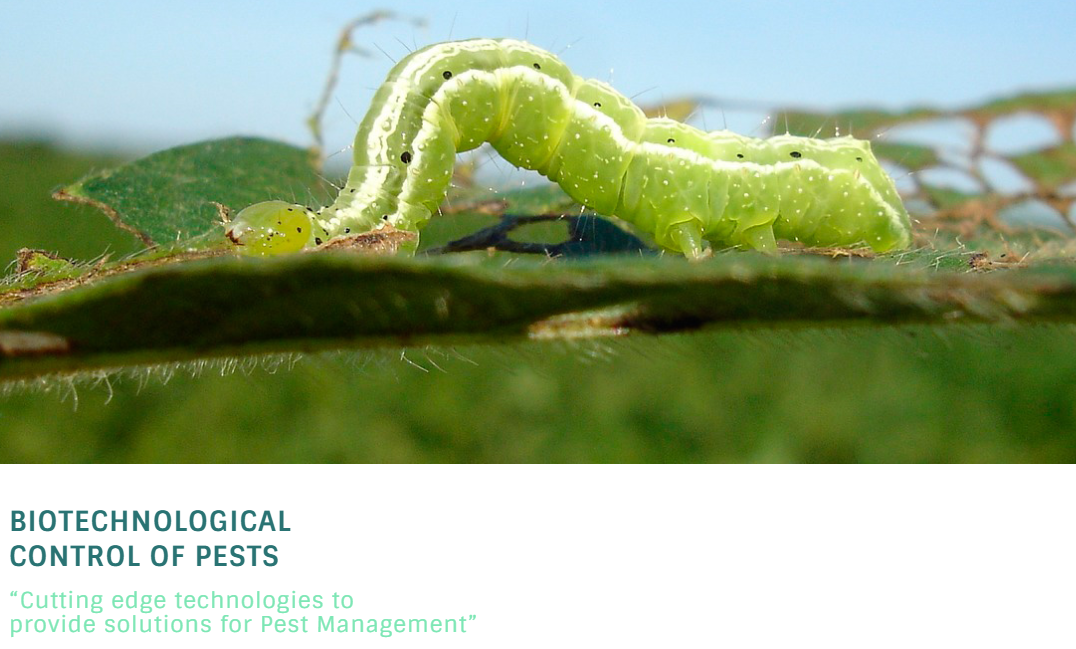More info at CBP Webpage
The Biotechnological control of pests Group works in the microbiological control of insect plagues using Bacillus thuringiensis and Baculovirus.


One of the agents used in the control of microbial pests is the Bacillus thuringiensis bacteria. During the sporulation, it synthesizes some special proteins which grouped forming a paraesporal crystal that can reach, in some strains, the same size as the spore. When insects ingest the sporulated bacteria, they eat the glass as well. It dissolves in the intestine releasing their protein components (protoxins) that usually must be activated by intestinal proteases in its final toxic form. The toxin then binds to receptors on the epithelial membrane of the intestine and produces pores in cell and finally the death of the insect. This poisoning facilitates the spore germinate and invade its host.
The other agents, baculovirus, are viruses that infect invertebrates, mainly insects of the Lepidoptera order. Also known as nucleopolihedrovirus, they are forced pathogens that are characterized by their rod-shaped nucleocapsids, each containing a single molecule of circular double-stranded DNA. The nucleocapsid is surrounded by a lipoprotein membrane to form virions, which are occluded by a protein matrix to form occlusion bodies (OB). Each OB can contain dozens of virions. Most baculovirus identified so far have been isolated from a few hundreds of species of insects, mainly Lepidoptera and Hymenoptera phytophagous, many of which are important pests of agricultural crops and forests. Baculovirus infection begins when the insect ingests the OB. This dissolves in the intestine with subsequent release of virions (also known as occluded derived virus, ODV). The ODV liberated fuse with the membrane of columnar epithelial cells of the intestine and enter the host cell. Once inside, the nucleocapsids are transported to the nucleus where transcription and replication takes place in the genome. There is a new form of the virus (budded virions, BV) in these infected cells. These forms will be released from the cells by budding to expand the infection systemically. In the last stage of the infection the insect disintegrates and releases millions of BV and OB in the atmosphere, which begins a new cycle.
The attractiveness of using these pathogens in the fight against the insects is, on one hand, its specificity, which can attack the pest without affecting the populations of useful insects, and, on the other hand are totally harmless to organisms different from insects, including humans. These features make insecticides based on B. thuringiensis and baculovirus an appreciated resource from the point of view of organic farming. In fact, they are one of the few insecticides allowed in this type of agriculture. Another attraction that presents B. thuringiensis is, due to the fact that the toxin is a protein, genes can be manipulated in the laboratory so that the mutant protein possesses a higher efficacy or even toxicity to develop new pest control. Nevertheless, this bacterium is especially known for its utility in genetic engineering since their genes can be integrated into the genome of plants, with which they produce the insecticidal protein and become resistant to the insects that attack them.
The search for new B. thuringiensis genes encoding insecticidal proteins will allow new extended spectrum of action of B. thuringiensis based insecticides. This is of great interest not only to combat pests so far are not controlled by this type of insecticide, but for toxins that maintain their effectiveness for controlling insect populations when they begin to develop resistance to the toxins of bacteria currently in use.
The matter of insect resistance is a serious problem that can leave an insecticide obsolete in a few years. This problem affects not only chemical insecticides, but also affects microbial insecticides. Knowledge of the mechanisms by which B. thuringiensis toxins or baculovirus act and by an insect can become resistant to them can help designing strategies to prevent the emergence of resistance to the maximum. The results of these researches are very important for designing strategies for use insecticides based on B. thuringiensis for minimizing the likely emergence of resistance and, thus, it may be able to extend the use of this highly esteemed insecticide. But this knowledge is especially relevant in the context of the design of transgenic plants resistant to insects, since the correct choice of genes (which encode toxins) to enter into a same plant depend on its mechanism of action. A plant expressing both toxins using the target site for the action will cause the emergence of resistance in pest insects faster than those which express two toxins with different target sites.
.png)







